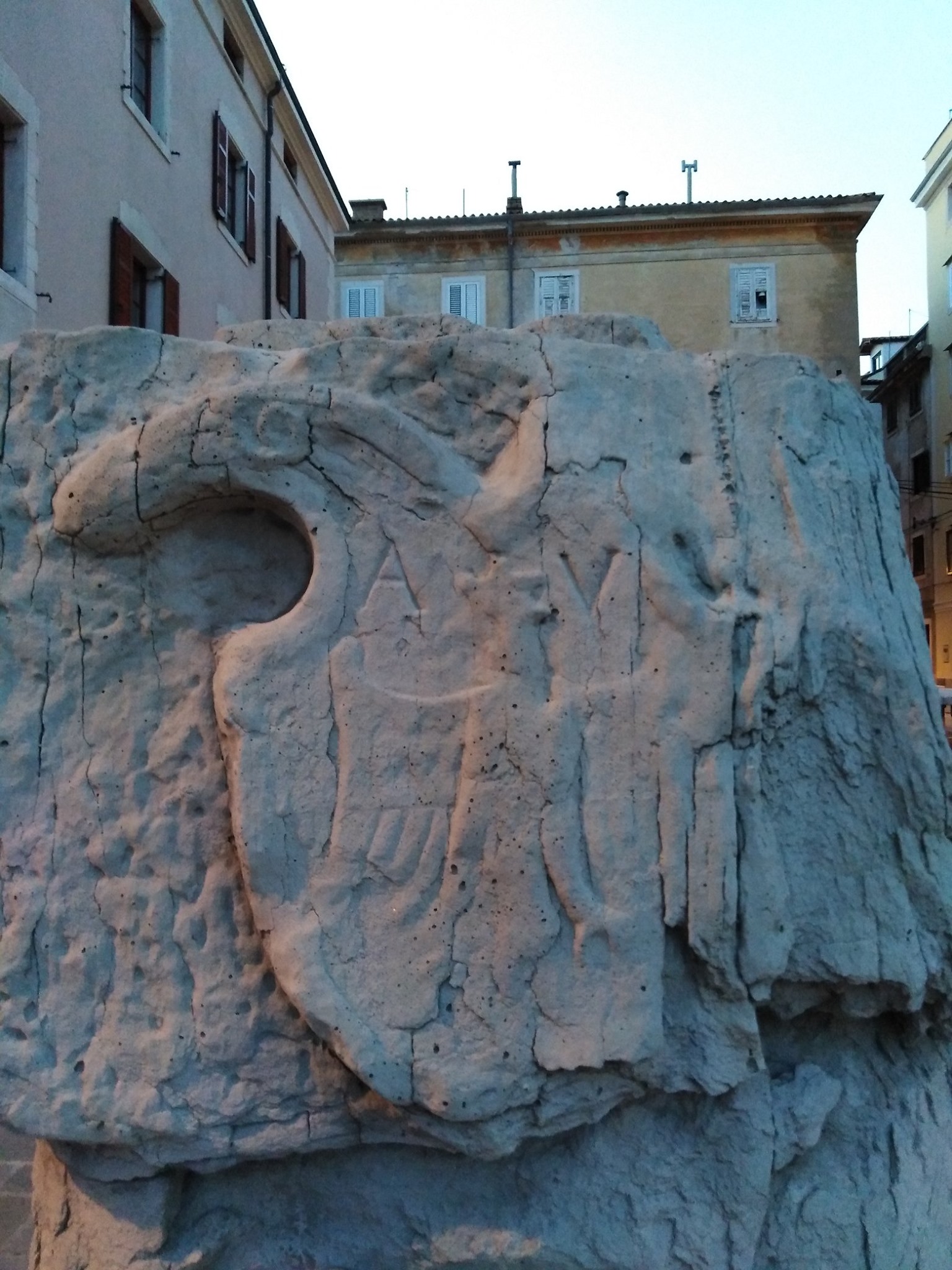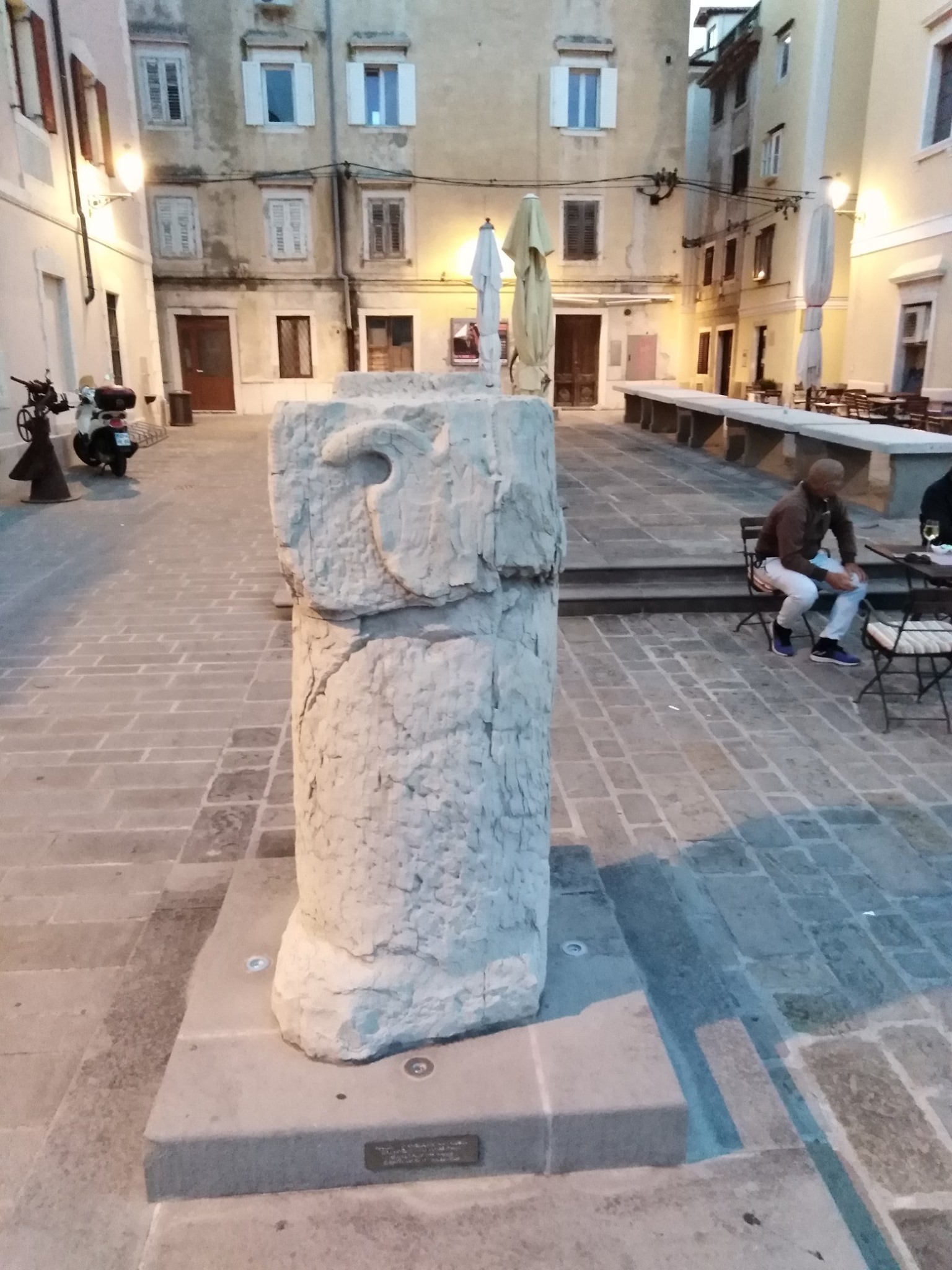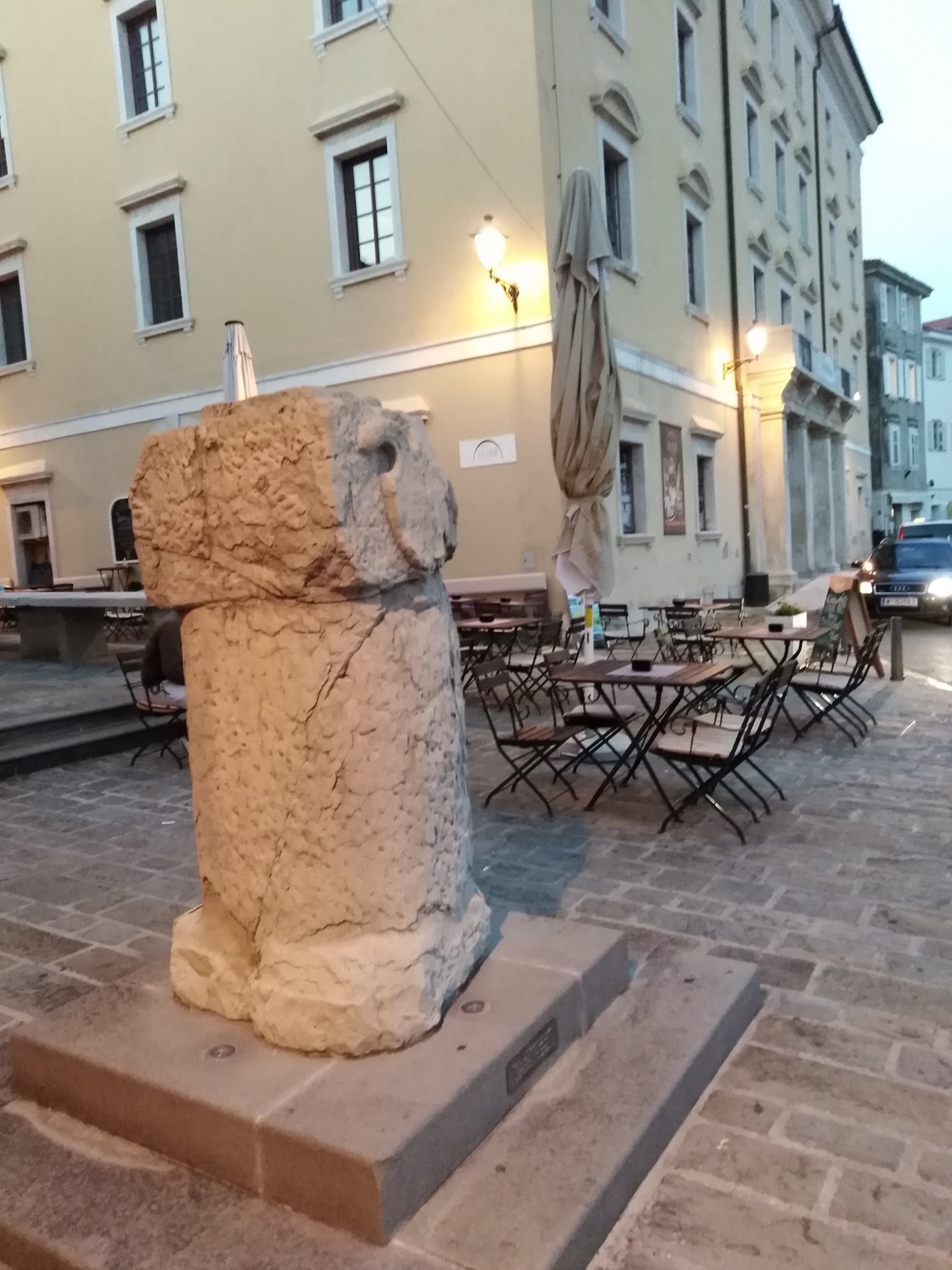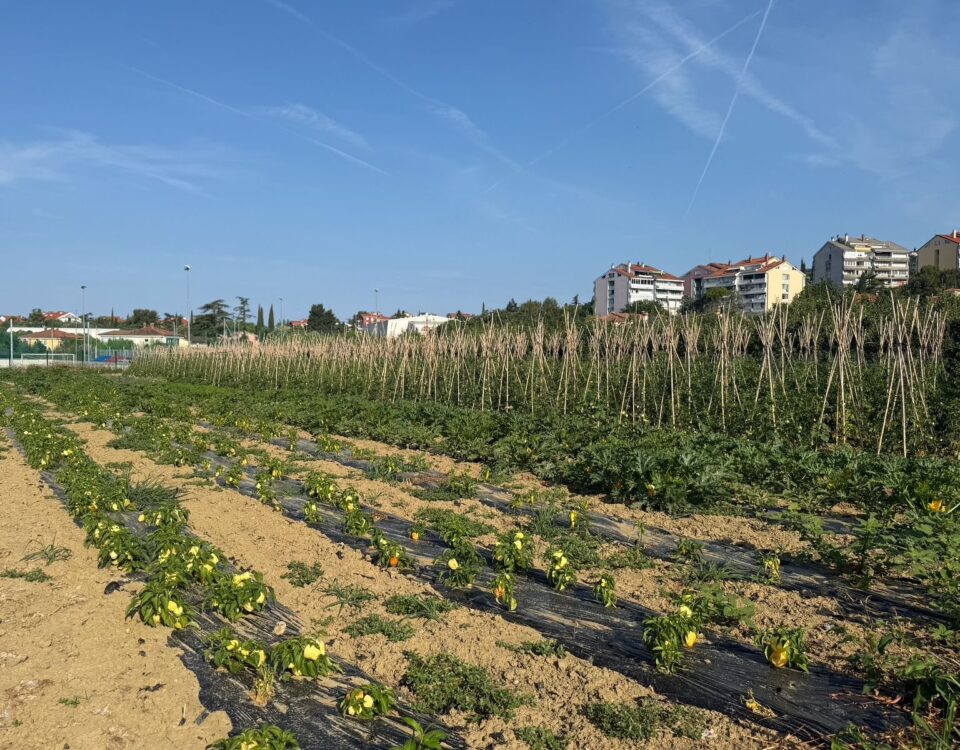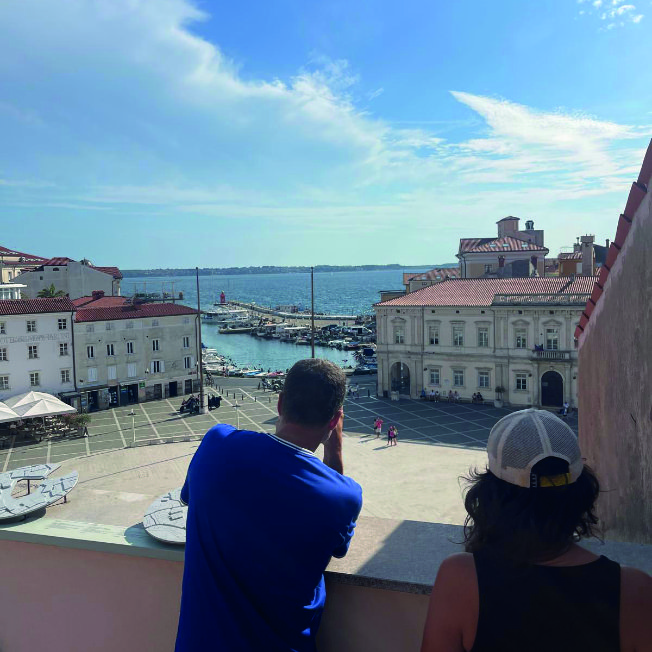Curiosità mai viste 16: la colonna dell’infamia
La cucina nelle saline – video presentazione
10/25/2020COMUNICATO – Informazioni per la settimana dal 26 al 31 ottobre 2020
10/26/2020LA COLONNA DELL’INFAMIA
Era cosa molto comune nelle cittadine del passato venir legati alla “colonna dell’infamia” per trasgressioni come bestemmie e calunnie e venir quindi esposti a pubblico ludibrio. Così anche a Pirano.
Quella che va sotto questo nome si trova nella piazzetta dei Pescatori, ex- Pescheria. Si tratta in realtà di una colonna o di una bitta risalente al XVI sec. Porta le iniziali A V del podestà Andrea Valier (1503) e l’aquila coronata che era nel suo stemma. Fu pescata negli anni ’30 del XX secolo durante il dragaggio del fondale del porto piccolo. Poiché il primo molo fuori le mura era proprio quello destinato alle galee è probabile che il podestà Valier facesse porre sulla cima questa grossa “bitta” con le sue iniziali. Un’altra ipotesi è che la bitta fu smontata quando venne prolungato il molo.
Diventò quindi colonna dell’infamia e fu collocata dietro il vecchio palazzo comunale del 1291. Con la fine della dominazione veneta i piranesi la rotolarono fino al porto e la scaraventarono in mare. I condannati potevano restare legati fino a tre giorni e tre notti alla colonna, a disposizione di chi voleva sfogare su di loro la propria ira, il proprio malcontento. Tutto ciò poteva essere evitato pagando una multa ma non tutti erano nella condizione di permetterselo.
